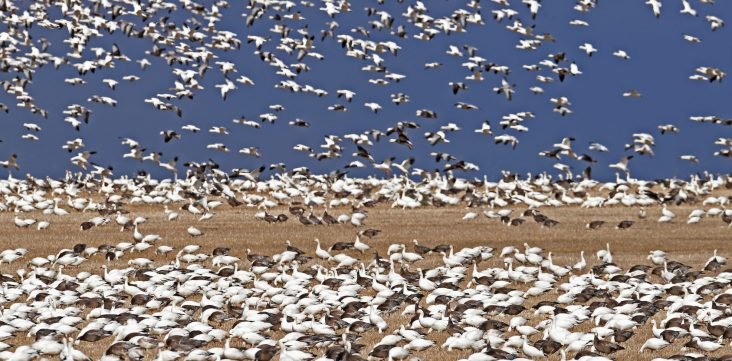By Traci Rushing
U of A System Division of Agriculture – UAM College of Forestry, Agriculture and Natural Resources
AUGUSTA, Ark. — Learning is better in the wild, and for Arkansas 4-H members the Cache River National Wildlife Refuge provided the perfect outdoor classroom.
Under the guidance of the state’s leading waterfowl and extension experts, participants in the Wonders of Waterfowl workshop engaged in an immersive learning experience focused on the ecology and management of Arkansas’ diverse duck populations.
Youth at the Wonder of Wildfowl event launch banded ducks back into the wild. (UA-Monticello image)
A favorite among the attendees was wading through a moist-soil unit to collect and examine aquatic invertebrates – a key food source for waterfowl.
With the help of University of Arkansas at Monticello waterfowl students and professors, participants analyzed their findings under microscopes, gaining firsthand insight into waterfowl feeding habits.
Other workshop highlights included discussions led by UAM waterfowl graduate students that covered waterfowl identification, habitat characteristics, and migratory hazards and patterns. These stops served as a perfect opportunity for Lily Barber, Grant County 4-H member, who attended because she wanted to learn how to identify waterfowl. At the close of the event, Barber shared her excitement in learning how to identify common ducks in Arkansas by their wings.
“We learned about ducks, what they eat, what their wing spans looks like and all the different types of ducks,” said Jayden Rushing, Calhoun County 4-H member.
Immersed in Research
As part of the Mississippi Flyway, Arkansas is a vital wintering ground for waterfowl, making it a hotspot for waterfowl research. Among the leading studies is the satellite tracking research led by Douglas Osborne, PhD, a renowned waterfowl professor and researcher at UAM. Participants had the unique opportunity to learn about the banding and tracking practices used by the lab’s researchers and view live tracking data from ducks fitted with transmitter technology.
Drew County 4-H member, Jack Wagner, was amazed to learn the impressive distances and speeds at which ducks travel during their migration to Arkansas. In the workshop, he learned ducks can reach flight speeds of more than 80 mph and sometimes cover more than 1,700 miles during their migrations.
The event concluded with researchers from the Osborne Lab and personnel from the U.S. Fish and Wildlife Service gathering ducks that had been trapped on the Cache River. They then demonstrated to youth how to tell the birds’ ages and band the birds. Participants were then each able to hold a duck and release it back on the refuge.
A Lasting Impact
The Wonders of Waterfowl program was started three years ago by Tiffany Osborne, UAM wildlife instructor, wildlife extension specialist for University of Arkansas System Division of Agriculture and workshop coordinator. Throughout the event, Osborne shared her passion for nature and extensive knowledge with the 4-H members.
“I started this program to connect youth across the state with nature and to teach them to respect the land,” said Tiffany Osborne. “It’s important that we create opportunities for the next generation to carry on the work of conservation.”
Through workshops like this, Arkansas 4-H continues to foster environmental education and stewardship, ensuring young people develop a deeper appreciation for wildlife, conservation, and agriculture practices. For more information on joining 4-H or upcoming events, contact your county’s Cooperative Extension Service Office.








